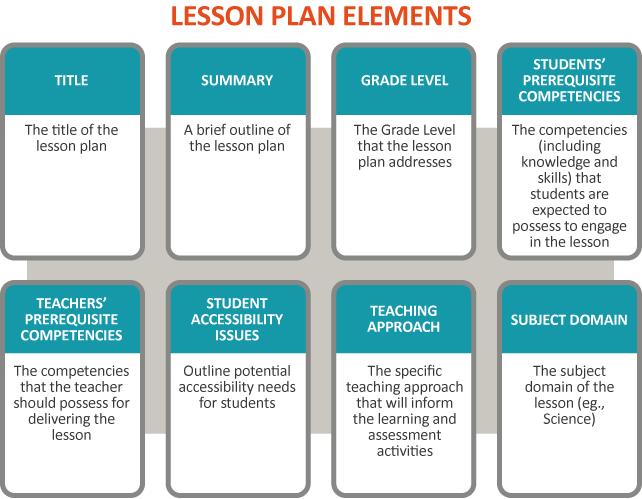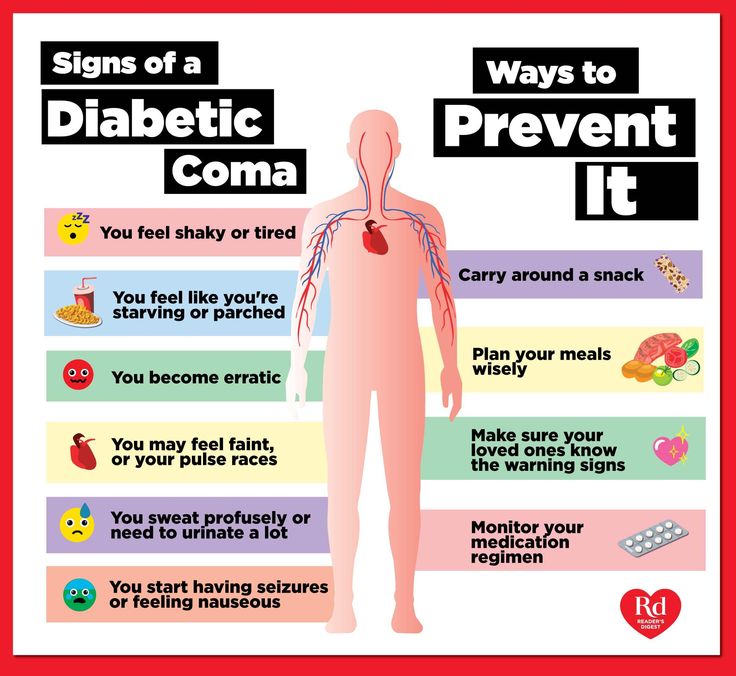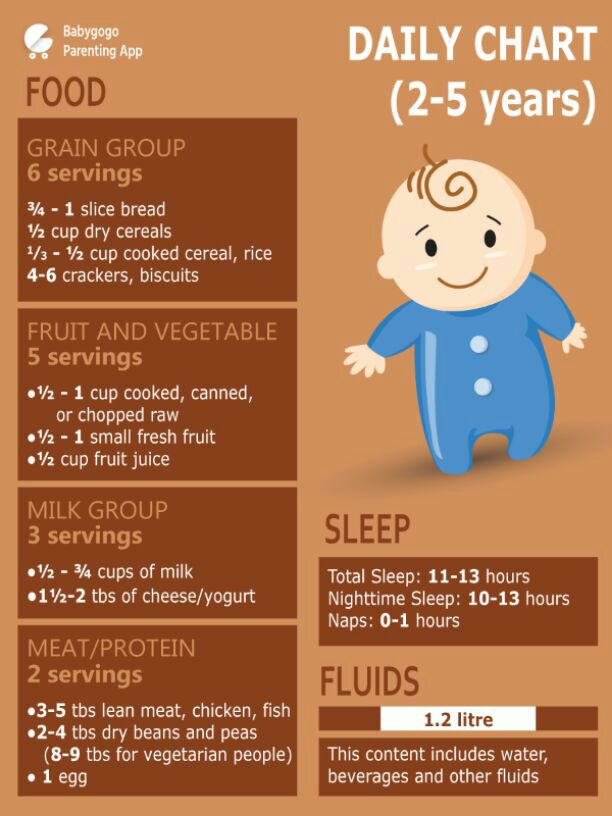How to create a birth plan
How to Write a Birth Plan
The ideal scenario for any birth is that things go smoothly and everyone is healthy. But there are a lot of different ways to give birth, and your version of things “going smoothly” could be different from someone else’s.
A birth plan defines your version of an ideal birth scenario and communicates it to your care team, ensuring everything goes as smoothly as possible. But what does a birth plan look like? Read on for a step-by-step guide to creating yours as well as real-life birth plan examples and a downloadable template.
What is a Birth Plan?
A birth plan is a document that lets your medical team know your labor and delivery preferences in regards to things like pain management, postpartum care, newborn procedures and even the vibes of the delivery room (lights, aromatherapy, etc.).
Think of your birth plan as a guideline or even a map. You have your destination (healthy baby and healthy you) and your preferred path for getting there, and your healthcare team will stick to that path as much as they possibly can. But keep in mind that there might be detours along the route—sometimes things don’t go as planned.
While it can be scary to think about something unexpected happening while giving birth, it doesn’t necessarily mean your birth plan goes entirely out the window. Your care team still has your and your baby’s health, safety and comfort top-of-mind while tending to an unexpected event, and including a space on your birth plan for things like emergency C-section (there are options for that!) and other delivery interventions will help guide them.
What goes on a birth plan?
Almost anything you want can go on your birth plan. But we emphasize almost, because the available options may vary by location. So before you start writing out your preferences, research your options ahead of time:
- Location. Will you be giving birth at a hospital, a birthing center or at home? If at a hospital or birthing center, which one? Tour the location and find out their procedures and practices, and request a list of all their available options for pain management and labor tools.
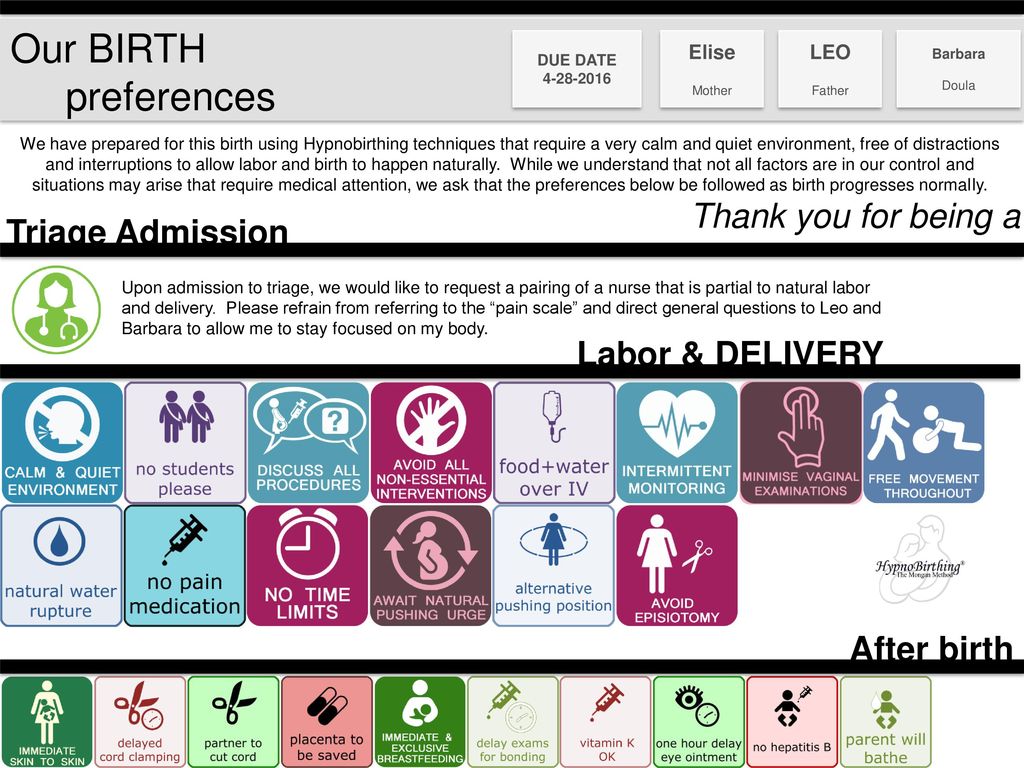 Ask about what you’re allowed to bring with you and if there’s anything they can’t accomodate.
Ask about what you’re allowed to bring with you and if there’s anything they can’t accomodate. - Delivery options. Vaginal and Cesarean are the delivery methods everyone knows, but hospitals also give the options for assisted vaginal delivery (with tools like foreceps or vacuum) and vaginal birth after Cesarean (VBAC). Keep in mind that if you’re planning to give birth at a birthing center or at home, your delivery options may be limited.
Once you’ve researched the most important details, it’s time to customize your options! And try to keep it simple. Your birth plan doesn’t need to be exhaustive—make it short and easy to read at a glance. There’s typically a lot going on in the labor and delivery department, so your care team will appreciate not having to read through multiple pages of your birth plan. Keep it to one page and use bullet points or highlighting where you can.
Introduction
This doesn’t mean write an About Me report, but you will want to list important medical info.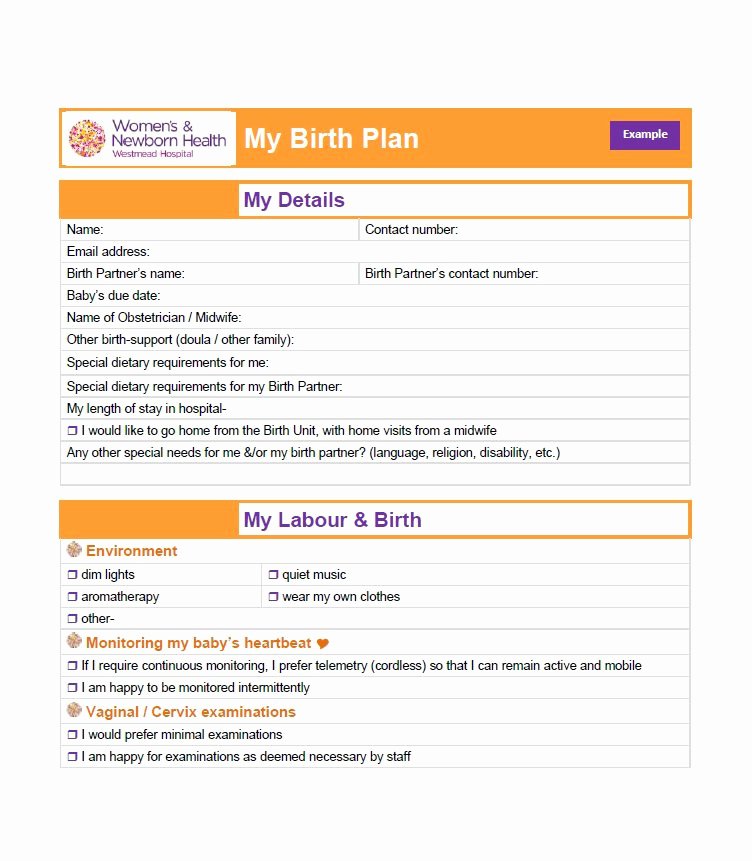 It might happen that you arrive at tbe L&D ward and there’s a doctor on call whom you’ve never met. This is also true for your labor and delivery nurses.
It might happen that you arrive at tbe L&D ward and there’s a doctor on call whom you’ve never met. This is also true for your labor and delivery nurses.
While medical conditions should be on your patient chart, it’s a good idea to list them in the same place as your birth preferences as well. Include things like:
- What kind of delivery you’re planning for
- If this is your first, second, third, etc. time giving birth
- Any medical conditions, especially gestational diabetes, preeclampsia, high blood pressure, STIs, anemia, high or low amniotic fluid, placenta previa or if you’re positive for Group B Strep.
- Your primary support person. Whether it’s your partner, a family member, a friend or a birth doula, include their name, phone number and relation to you in case they need to be contacted.
Labor Pain Management Options
The labor question that gets all the attention: are you planning a medicated or unmedicated delivery? This Pain Medications Preference Scale by physical therapist Penny Simkin is really helpful if you need assistance articulating how you feel about pain management in labor.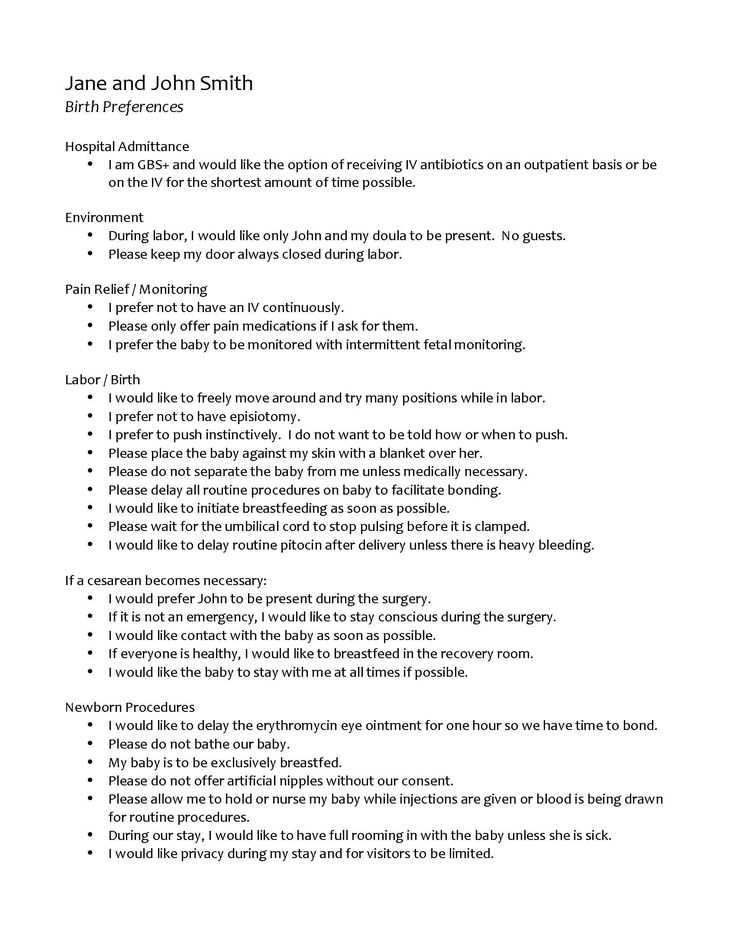
Medication: The typical medication options for labor are an epidural, a spinal block, opiods via IV, local anesthetic and nitrous oxide.
Non-medicated options: Non-medicated (also called non-pharmacological) pain relief options include breathing techniques, hot and/or cold compresses, massage and counterpressure, aromatherapy, hyrotherapy (bath or shower), meditation and movement as well as “labor tools” like a birthing ball, peanut ball or squat bar.
Delivery Room Preferences
To some extent, even in the hospital, you can make decisions on what your birthing environment looks like. Let your healthcare team know your preferences on:
- Who else you want in the room. Some places have restrictions on how many people can be in the delivery room, so be sure to ask about that. List your support person/people, and let the hospital team know whether or not you’re okay with having medical students in the room for training purposes.

- Lights, either dimmed or bright.
- Music or a sound machine.
- General noise level, including speaking voices.
- Clothing (a hospital-provided gown or your own clothes).
- Touch, especially from the care team.
- Fetal monitoring, either constant or intermittent.
- Movement.
- Having clear fluids to drink.
Delivery Options
Besides your preferred method of delivery (vaginal, assisted vaginal, C-section or VBAC), add some preferences about positions for pushing, if you have them. Some options are lying on your back, lying on your side, squatting, standing or leaning, kneeling/on all fours or being in a birthing tub.
Other delivery options that might go on a birth plan are a mirror to see the birth as it happens, who will be cutting the cord and preferences for skin to skin after the birth.
In the Event of the Unexpected
No one wants to think of what could happen during labor and delivery, but it’s important to plan for the unexpected, or at least to list your preferences.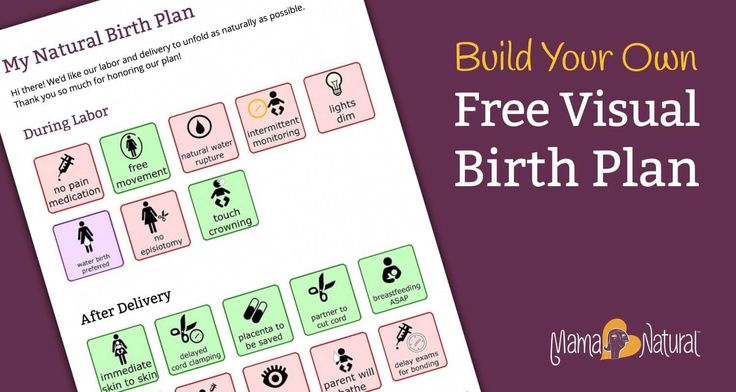
If you’re planning for an unassisted vaginal birth, there’s a chance your doctor might tell you that some assistance tools will help things go more smoothly. If case this happens, write on your birth plan how you feel about the use of forceps, vacuum or an episiotomy.
If you’re planning for a vaginal birth but end up needing an emergency C-section, there are still some options you can request for your own comfort, including:
- Vaginal seeding.
- Drape options: full drape with no view of the birth, lowered drape so you see the birth but not the rest of the operation or clear drape so you see everything going on down there.
- Monitoring devices (computers) placed out of your field of vision.
- Gentle Cesarean.
Newborn Procedures
Hospitals and birthing centers have several procedures just for newborns, and they’re also important to include on your birth plan. Write down your desires for:
- Baby’s first medications: Vitamin K shot, Hepatitis B shot and Erythromycin eye ointment
- Bathing baby (or delaying baby’s first bath)
- PKU testing
- Plans to breastfeed, give baby formula or donor milk or a combination
- Circumcision (if applicable)
- Where baby will sleep (your recovery room or the nursery)
Other information to include are baby’s pediatrician information, including their name, clinic and phone number, whether you will be banking the cord blood and whether you will be keeping the placenta.
Once your birth plan is finished and printed, highlight your main preferences on it for fast reference. That way if a care provider only has time to glance at it, they’ll easily be able to spot the most important parts of your birth plan.
Bring your birth plan to one of your doctor appointments and discuss it with them so they understand what you’re hoping for during your birth. Then include a few printouts in your hospital bag so you’ll have it with you on the big day.
Birth Plan Examples
Every birth plan will look different, and not just the preferences. Birth plans come in all types of formats. Here are some examples (from real people!) of what birth plans can look like, from basic word processor documents to visual-based templates to spreadsheets.
EXAMPLE 1
EXAMPLE 2
EXAMPLE 3
EXAMPLE 4
Babylist Birth Plan Template
Ready to write up your birth plan? Here’s a template (specially made for you by Babylist!) that you can download, print and fill out.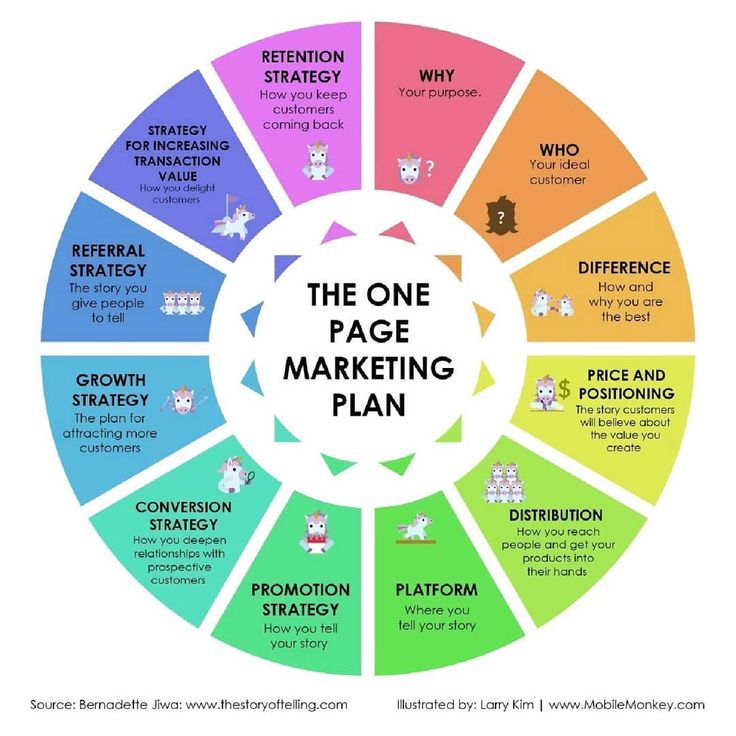
Download this template.
About Babylist
Looking for the best items for your growing family? Add all your favorite baby products to ONE registry with Babylist.
This information is provided for educational and entertainment purposes only. We do not accept any responsibility for any liability, loss or risk, personal or otherwise, incurred as a consequence, directly or indirectly, from any information or advice contained here. Babylist may earn compensation from affiliate links in this content. Learn more about how we write Babylist content and the Babylist Health Advisory Board.
Making your birth plan | Tommy's
Tommy's PregnancyHub
A birth plan is a written record of what you would like to happen during your labour and after the birth. It can also include things you’d like to avoid.
What is a birth plan?
A birth plan is a way for you to tell your healthcare team what kind of labour you’d like, what you want to happen and what you want to avoid. Your birth plan can cover anything about labour and birth that is important to you.
Your birth plan can cover anything about labour and birth that is important to you.
Your plan is personal to you. It will depend on what you want, your medical history, your circumstances and what is available at your maternity service.
You don’t have to write your birth plan on a special form, although some hospitals may have one you can use. You can just use a sheet of paper or NHS Choices have a simple birth plan that you can download and fill in.
Do I have to write a birth plan?
You don't have to write a birth plan. If you do decide to write one, your midwife can help you. They will be able to:
- answer your questions about what happens in labour
- tell you more about what facilities are available in your area
- help you work out what your preferences and priorities are.
What should l include in my birth plan?
You may want to include things such as:
- who you want as your birth partner
- where you want to give birth
- what positions you’d like to use during labour
- what type of pain relief you want to use during labour
- if you would like any music playing while you give birth
- how you would like to deliver the placenta
- how you would like to feed your baby after birth
- if you’d like any special facilities, such as a birthing pool
- what your preferences are about having skin-to-skin time with your baby and delayed cord clamping
- If you have any special requirements, such as needing a sign language interpreter or you would like certain religious customs to be observed.
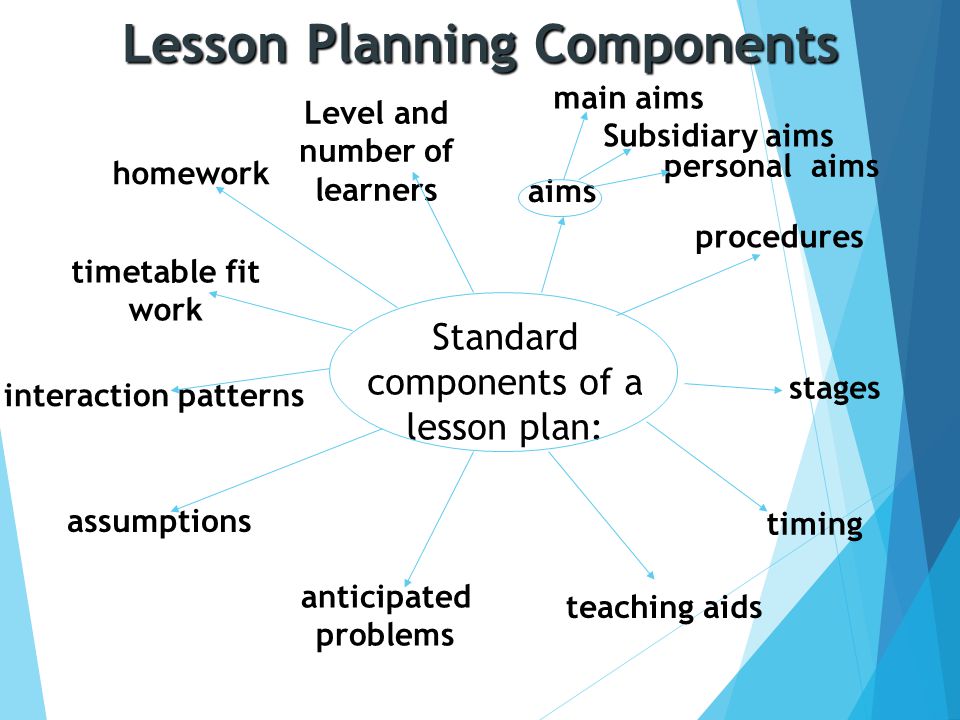
After you’ve made your birth plan, it’s a good idea to share it with your birth partner. They will be able to support you better if they know more about what you want. It also helps to talk through it with your midwife.
If you’re having a caesarean section
There are some things you can add to your birth plan if you’re having a planned c-section. For example, you may want the screen lowered, or you may not want a screen at all, so you can see your baby being born. Find out more about preparing for a caesarean section.
Vitamin K for newborns
After your baby is born, you’ll be offered an injection of vitamin K for them. This is recommended to help prevent a rare bleeding disorder called Vitamin K Deficiency Bleeding.
Your midwife will talk to you about this injection during your pregnancy. If you don’t want your baby to have an injection, they can have vitamin K by mouth instead, but they’ll need more doses. Your midwife can give you more information and you can include your preference in your birth plan.
Delayed cord clamping
NICE guidance recommends that the umbilical cord, which links your placenta to the baby, is not clamped and cut until at least 1–5 minutes after you give birth. This allows the blood from the placenta to continue being transferred to the baby even after they are born, which helps with their growth and development.
Delayed cord clamping should be practised everywhere, but you should still include this in your birth plan.
What happens after I make my birth plan?
Being flexible
Sometimes things don’t go according to plan during pregnancy or labour. You need to be flexible and be prepared to do things differently from what you wanted. For example, certain facilities may not be available on the day or there may be complications.
You can talk to your midwife about what could happen in labour and include your preferences in your birth plan, but don’t worry too much about trying to include everything. Your maternity team should involve you (or your birth partner if necessary) in any decisions that need to be made on the day to make sure your baby is delivered safely.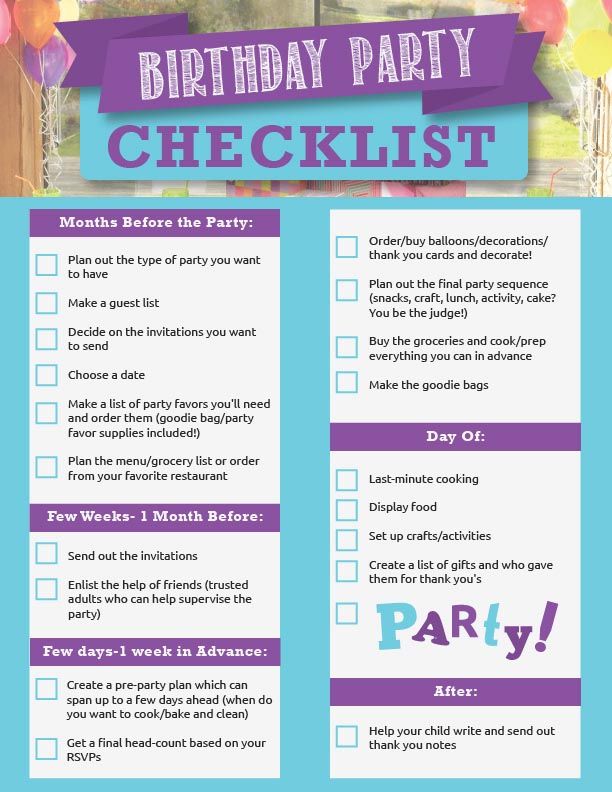
Changing your mind
You can change your mind about your wishes for labour and birth at any time, even during labour if you want to. For example, you may find on the day that you don't want a water birth or that you do want gas and air after all.
The Wellbeing Plan
Our online Wellbeing Plan is like a birth plan but for emotional wellbeing. It can help you start thinking about how you feel and what support you might need in your pregnancy and after the birth.
Use it to help you talk to your partner, family, friends or midwife about how you are feeling. You can also keep it private if you want to.
Review dates
Reviewed: 05 June 2019
Next review: 05 June 2022
This content is currently being reviewed by our team. Updated information will be coming soon.
Back to top
How to write the right birth plan
What do the studies say?
The birth plan in America and Great Britain has become such a common occurrence that its effect on childbirth has already been studied.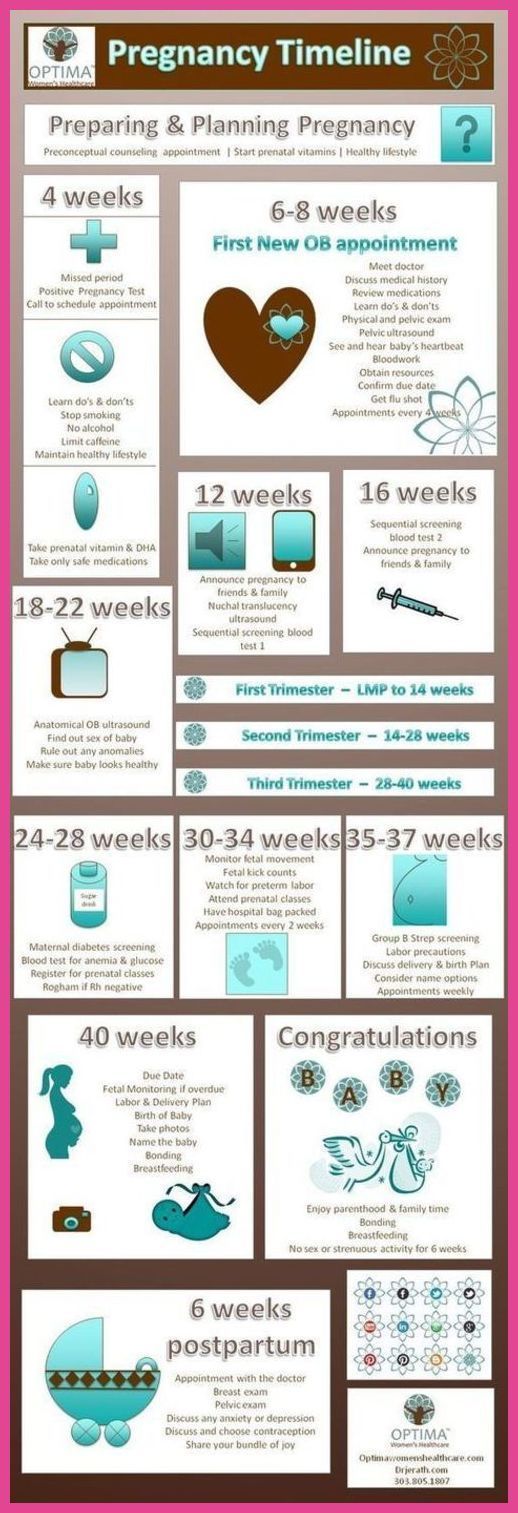 Absolutely, the wish list helps a woman start a dialogue with a doctor.
Absolutely, the wish list helps a woman start a dialogue with a doctor.
However, in some cases, the presence of a birth plan adds additional tension to communication. It can be uncomfortable for doctors to work with parents who take on the functions of a doctor, refusing most standard medical procedures, but at the same time leaving the responsibility for their health to doctors. Doctors meet daily with women who want about the same thing: minimum intervention, maximum health. And often doctors are skeptical about such ideas - after all, they know better than others how, in fact, childbirth takes place in their maternity hospital and what medical model of care for a woman in labor is adopted.
In 2011, a study was conducted in America on the relationship between the birth plan and pain management. It turned out that 50% of women indicate in terms of childbirth that they want to give birth without epidural anesthesia. And yet, 65% give birth, in the end, with her.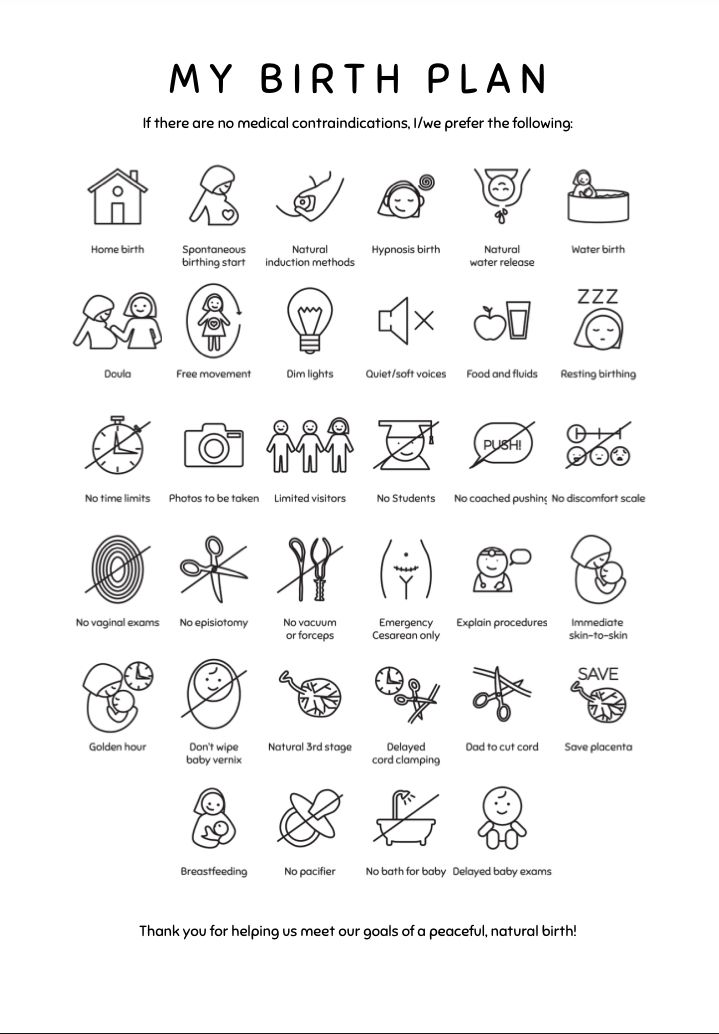 Of these, 90% are ex post facto satisfied with the fact that they received pain relief during childbirth, even if they did not plan it. Observing such figures in practice, it is really difficult to take the birth plan seriously.
Of these, 90% are ex post facto satisfied with the fact that they received pain relief during childbirth, even if they did not plan it. Observing such figures in practice, it is really difficult to take the birth plan seriously.
In 2014, a phenomenological study of the attitude of British midwives to the birth plan was carried out and it turned out that the birth plan most often becomes a source of irritation for them. Even for those who work in the milder environment of the birth center.
Sometimes parents believe so passionately in their plan that the expectations of childbirth become too rigid: any deviation from the plan creates guilt (“we didn’t make it”) and fear (“no one wants to follow our plan”). There is an additional tension - how to choose the "right" solution that will help achieve the "right" result. For example, to give birth without / with epidural anesthesia. I specifically put here two seemingly extreme options - it's not about natural or medical childbirth, it's about attitude towards myself, doctors and the process of giving birth to a baby. Rigid expectations set the stage for trauma and self-blame.
Rigid expectations set the stage for trauma and self-blame.
The question is how to expand the boundaries of your expectations?
Another important point about the birth plan: sometimes the information in the plan does not correspond to modern scientific data on the health of the mother and child.
Why not expect or plan anything now?
Of course, both plan and expect.
The birth plan is an excellent starting point for a dialogue with a specialist. Someone you invite to share your responsibility for the medical aspects of childbirth. But the key word here is dialogue.
In class we sometimes do a role play where parents get experience and an idea of what a dialogue in labor might look like ("3 words between contractions", yep). At the same time, no pregnancy course will prepare you or your partner for ALL possible medical events in childbirth. I still remember one wonderful dad in the Full Course, who asked us: "Tell me, is there a 6-month training for obstetricians? I still have time before the birth of my beloved.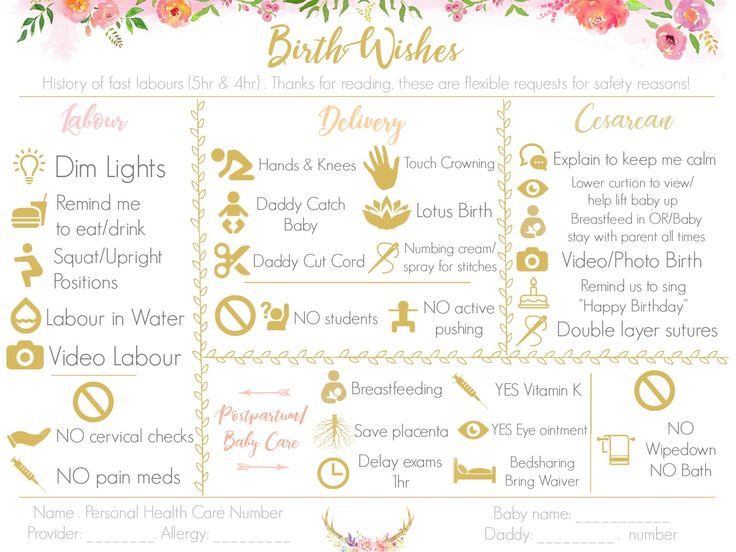 " In the same way, it is impossible to prescribe in the plan all the possible scenarios for the development of events. Childbirth is a process in which many factors are combined and only a part of them can be controlled.
" In the same way, it is impossible to prescribe in the plan all the possible scenarios for the development of events. Childbirth is a process in which many factors are combined and only a part of them can be controlled.
For example, you can understand in advance how the approach to childbirth with the chosen specialist (doctor and/or midwife) matches your wishes. In childbirth, it is easier and more beneficial for the process to relax and trust than to demand and wait for a dirty trick from those who help. It is helpful to know in advance how the doctor and midwife feel about what matters to you.
What is important for you in childbirth? Sometimes it takes a woman time to come to an understanding of herself and her own needs in childbirth. Pregnancy is a good time to work through this on your own or with a doula.
Text: Daria Utkina
Birth plan | Articles by EMC Doctors on Diseases, Diagnosis and Treatment
Soon you and your doctor will have to draw up a detailed plan for childbirth.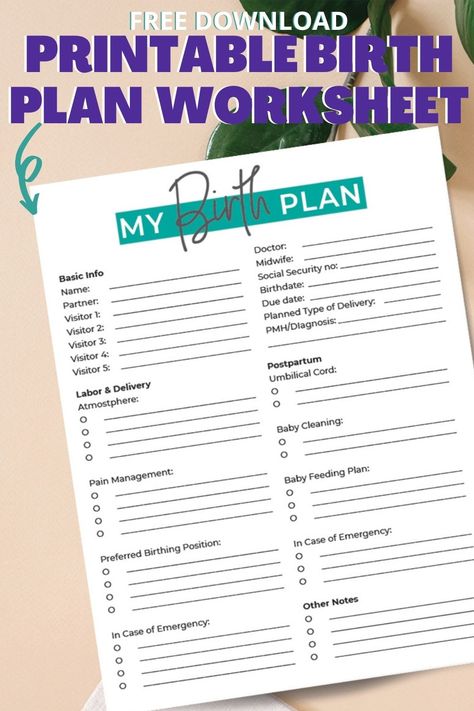
Unfortunately, not always the expectant mother can participate in the planning of childbirth. As a rule, in most clinics, the sole decision is made by the obstetrician-gynecologist and all objections and wishes are rarely taken into account.
However, choosing the clinic where your baby will be born and the doctor who will help him to be born, you, of course, are already planning your ideal birth. It is our deep conviction that in order for the birth to go the way you want, even with the amendments and adjustments that life can make, first of all, we must hear the expectant mother and her wishes.
What do we mean by the birth plan and how it happens, - says the head of the EMC Perinatal Center prof. Natalia Kan.
What should be in the plan of childbirth?
The first thing the doctor evaluates is the possibility of having a baby through the natural birth canal. The size of the fetus, its location, the characteristics of the pelvis, and whether there are any aggravated factors in the form of somatic or obstetric pathology are taken into account.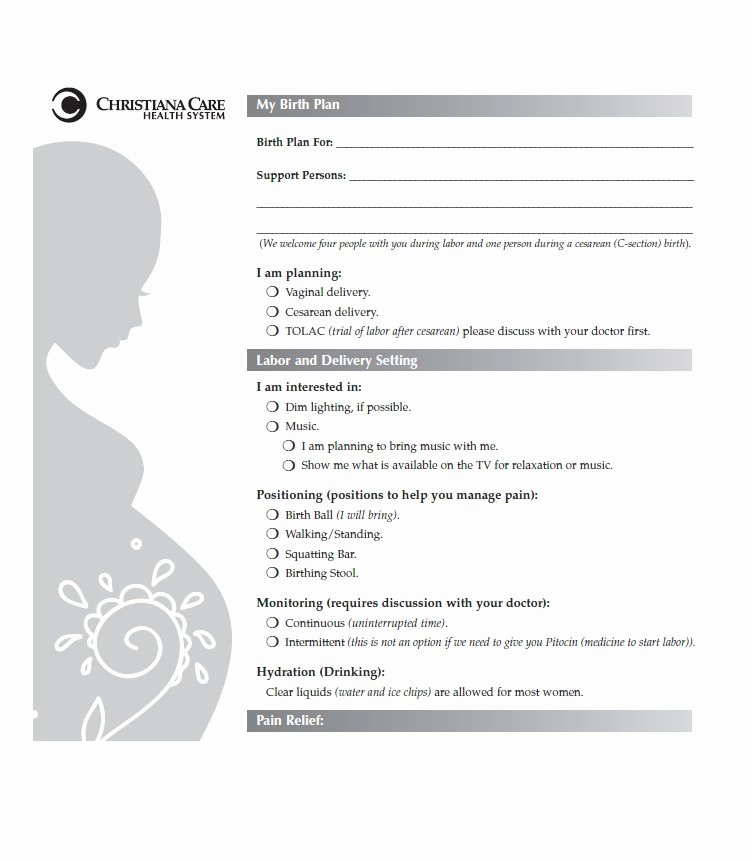 For us, the most important thing is the health of the mother and her unborn baby, even minimal risks must be taken into account. If a woman in labor has strict indications for a planned caesarean section, the doctor will discuss in detail all the risks that may be if you choose a different method, tell you why operative delivery is required. For example, with complete placenta previa, the doctor adds measures to prevent possible risks to the plan.
For us, the most important thing is the health of the mother and her unborn baby, even minimal risks must be taken into account. If a woman in labor has strict indications for a planned caesarean section, the doctor will discuss in detail all the risks that may be if you choose a different method, tell you why operative delivery is required. For example, with complete placenta previa, the doctor adds measures to prevent possible risks to the plan.
Most cases involve vaginal delivery or elective caesarean section. Then we provide all the possibilities for the imagination of future parents: do they want to be together in the birth unit, do they need to dim the lights, what music should be played, perhaps the woman wants to call her doula for childbirth or ease the contractions in the water, will the husband be present in the operating room and take the child first.
When drawing up a birth plan, the doctor and the patient discuss the possibility of inducing labor, the use of anesthesia, pain relief after cesarean, the ability to cut the umbilical cord and much more.